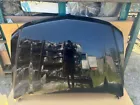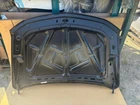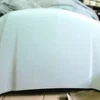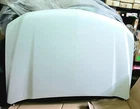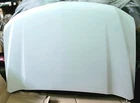Chevy Tahoe/Suburban Black Hood
1,000 $
The Chevy Tahoe/Suburban Black Hood have earned a strong reputation in the SUV market due to their powerful performance, spacious interiors, and rugged capability. Whether used as a daily driver, a family hauler, or a fleet vehicle, these SUVs demand high-quality components for optimal performance and aesthetics. One such component is the Chevy Tahoe/Suburban Black Hood a major visual and functional part of the vehicle’s front-end structure.
The Chevy Tahoe/Suburban Black Hood have earned a strong reputation in the SUV market due to their powerful performance, spacious interiors, and rugged capability. Whether used as a daily driver, a family hauler, or a fleet vehicle, these SUVs demand high-quality components for optimal performance and aesthetics. One such component is the Chevy Tahoe/Suburban Black Hood a major visual and functional part of the vehicle’s front-end structure.
In this comprehensive guide, we explore the Chevy Tahoe/Suburban black hood, focusing on OEM specifications, benefits, styling elements, compatibility, and key considerations. Whether you are replacing a damaged hood, customizing your vehicle, or restoring a model to factory condition, understanding the black hood’s features and advantages will help you make the right decision.
Understanding OEM vs. Aftermarket Hoods
Before discussing the black hood specifically, it’s important to differentiate OEM (Original Equipment Manufacturer) parts from aftermarket alternatives.
-
Chevy Tahoe/Suburban black hood are made by GM or authorized suppliers, using the exact specifications and materials as the original part that came with the vehicle.
-
Aftermarket hoods are produced by third-party manufacturers. While they may be less expensive, they often differ in quality, fitment, and longevity.
For a component as large and visible as a hood, especially one painted in black (which highlights imperfections), OEM quality is usually preferred for a clean, professional result.
Compatibility Across Model Years
Chevrolet has updated the Tahoe and Suburban across multiple platforms over the years. The black OEM or OEM-style hoods will differ by model year and generation:
-
2000–2006 (GMT800 Platform)
-
2007–2014 (GMT900 Platform)
-
2015–2020 (K2XX Platform)
-
2021–Present (T1XX Platform)
Each generation features unique hood contours, mounting points, grille connections, and material options. Always verify fitment with your exact model year, trim level, and whether your vehicle includes options like hood scoops or functional air vents.
Black Hood: Material and Construction
Chevy Tahoe/Suburban black hood for the Tahoe and Suburban are built using either high-strength steel or aluminum, depending on the generation:
Steel Hoods
-
Common in earlier generations (2000–2014)
-
Heavier but more affordable and easier to repair
-
Offers strong resistance to denting and flexing
Aluminum Hoods
-
Used in more recent generations (especially 2015+)
-
Lighter, improving fuel economy and front-end weight distribution
-
More resistant to rust, though harder to repair after damage
OEM hoods are precision-stamped for exact fitment, and often come with factory inner reinforcement structures for rigidity, safety, and better vibration damping.
Paint Finish: Types of Blac
A Chevy Tahoe/Suburban black hood may be part of a complete vehicle color or used as a contrast or accent component (e.g., in performance trims like RST or Z71). Several black finishes have been offered by Chevrolet across model years:
Common OEM Black Paint Codes:
-
GBA / WA8555 – Black: A standard gloss black used widely across GM vehicles
-
GB8 – Mosaic Black Metallic: A modern, premium metallic black with a fine sparkle
-
GJI – Black Cherry Metallic (less common)
-
Matte Black / Satin Black: Typically used in special-edition models or aftermarket modifications
If purchasing an Chevy Tahoe/Suburban black hood, the finish is applied at the factory using multi-stage paint technology (base coat + clear coat), ensuring UV resistance, gloss retention, and perfect color matching.
For aftermarket black hoods or repainted OEM hoods, professional prep and paintwork is essential to avoid swirls, orange peel, or mismatched hues.
Design Features and Integration
While primarily functional, the Chevy Tahoe/Suburban black hood is designed with aesthetic and aerodynamic considerations in mind:
1. Aerodynamics
The hood is shaped to channel airflow over and around the SUV, reducing wind drag and optimizing fuel efficiency.
2. Heat Management
Vented hood options (often in performance trims) help release engine bay heat. These are particularly useful in towing or high-speed driving applications.
3. Accessory Integration
OEM hoods accommodate factory features like:
-
Windshield washer nozzles
-
Under-hood insulation
-
Gas struts or hood props
-
Safety latches and crumple zones
Aftermarket hoods, especially fiberglass or carbon fiber versions, may lack these mounting points or require custom installation.
Chevy Tahoe/Suburban black hood for Style and Personalization
A black hood can dramatically change the look of a Tahoe or Suburban. Here are some ways it’s used in styling:
-
Two-Tone Looks: A black hood contrasts with a white or silver body for a bold, sporty appearance.
-
Murdered-Out Builds: All-black Tahoe/Suburban builds are popular for their stealthy, aggressive aesthetic.
-
RST and Midnight Editions: These special trims often include a black hood, black wheels, and blackout badging from the factory.
-
Off-Road Variants: Blacked-out hoods reduce glare and provide a rugged, tactical appearance.
Even if your SUV isn’t a factory special edition, a black hood can give it that premium look with minimal modifications.
Installation and Fitment
One of the biggest advantages of using an Chevy Tahoe/Suburban black hood is hassle-free installation:
-
Bolt-on compatibility with factory hinges and latch
-
Flush alignment with fenders and grille
-
Pre-cut holes for nozzles, heat shields, and struts
-
Paint-match consistency, if using factory paint
DIYers with moderate mechanical skills can often swap out the hood themselves, though due to the size and weight of the hood, having a second person to assist is strongly recommended. Professional installation is advisable for perfect alignment and paint protection
OEM vs Aftermarket Black Hoods: A Comparison
| Feature | OEM Black Hood | Aftermarket Black Hood |
|---|---|---|
| Material Quality | High-strength steel/aluminum | Varies (steel, fiberglass, CF) |
| Paint Finish | Factory paint, perfect match | Usually needs repainting |
| Fitment | Guaranteed perfect fit | May require drilling or trimming |
| Safety Standards | Crash-tested and compliant | Not always tested |
| Cost | Higher upfront | Cheaper, but hidden costs possible |
| Longevity | Long-lasting with warranty | Varies by manufacturer |
If your goal is to retain vehicle value and original quality, the OEM hood is almost always worth the extra investment.
Pricing and Availability
Chevy Tahoe/Suburban black hood typically range in price from $600 to $1,600, depending on:
-
Model year
-
Hood material (steel vs aluminum)
-
Paint finish (standard vs metallic/pearl)
-
Whether insulation or hardware is included
Aftermarket Chevy Tahoe/Suburban black hood can be found as low as $300, but you should factor in:
-
Shipping (they’re bulky and heavy)
-
Painting (if not already finished)
-
Possible rework for fitment
Where to Buy:
-
GM Dealerships
-
Online OEM Parts Suppliers (e.g., GMPartsDirect, GMPartsGiant)
-
Certified Collision Centers
-
Salvage Yards (for OEM used black hoods)
-
Performance and Custom Shops (for specialty aftermarket hoods)
Conclusion
A Chevy Tahoe/Suburban black hood is more than a cosmetic choice—it’s a structural, functional, and styling element that plays a key role in your SUV’s performance and appearance. Whether you prefer the clean lines of a factory gloss black hood or the rugged aesthetic of a matte black aftermarket variant, the hood you choose should align with your vehicle’s needs, your style preferences, and your budget.
For those aiming to maintain or restore OEM quality, going with a factory black hood ensures a perfect fit, long-lasting durability, and cohesive design integration. For customization, aftermarket options open the door to unique finishes and hood styles but may require extra time, effort, and adjustment.


